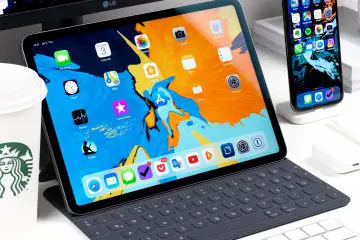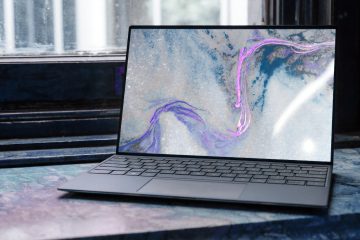In the fast-paced digital era we inhabit, computers have become indispensable companions, seamlessly integrating into our daily lives. But have you ever wondered about the intricate mechanisms that power these modern marvels? In this captivating exploration, we embark on a journey through the realm of computer parts, peering behind the sleek exteriors to uncover the intricate web that brings these machines to life.
Imagine the inner workings of a computer as a symphony, a harmonious interplay of various elements, each with a distinct role to play. Just as a conductor guides an orchestra, a central component serves as the backbone, orchestrating the smooth execution of tasks and operations. Supporting this core element, an array of specialized components work in unison to create seamless experiences, enhancing both functionality and performance.
Venturing deeper into the machine’s architecture, we encounter the realm of memory, a vital element that empowers computers to swiftly access and store data. The interconnected pathways, akin to a complex network of highways, facilitate seamless communication, ensuring that information flows effortlessly between components, enabling the computer to adapt and respond.
Stepping into the realm of storage, we discover the repositories where digital lives are stored and safeguarded. From preserving cherished memories to housing valuable documents, these storage components stand as guardians of our digital footprints, ready to retrieve and present them at a moment’s notice.
Power, the life force of any machine, pulses through the veins of the computer, providing the necessary energy for every component to fulfill its purpose. To maintain balance and prevent overheating, an array of innovative cooling mechanisms diligently regulate temperatures, safeguarding the delicate harmony within.
While the external shell of a computer showcases its unique personality, the true essence lies within the ensemble of components that breathe life into its digital existence. Each input device acts as a conduit for our intentions, while output devices bridge the gap between the digital realm and our senses, transforming bits and bytes into tangible experiences.
As we embark on this enthralling exploration, we invite you to join us in unraveling the enigma of computer parts, delving into the intricacies that underpin their functionality. Together, we will uncover the fascinating stories that reside within the interconnected pathways, unlocking a deeper understanding of the machine that has revolutionized the way we work, play, and connect.
So, whether you are a curious enthusiast seeking to demystify the inner workings of your trusty device or an adventurous soul yearning to comprehend the intricate dance of technology, this captivating journey will illuminate the inner mechanics of computer parts. Prepare to be captivated as we traverse the digital landscape, shedding light on the unseen gears that drive our technological world.
List of Computer parts
| Component | Description |
|---|---|
| CPU | The central processing unit, responsible for executing tasks and calculations. |
| GPU | Graphics processing unit, specialized for rendering graphics and images. |
| RAM | Random Access Memory, provides temporary storage for data and program instructions. |
| Motherboard | Main circuit board that connects and allows communication between components. |
| Hard Drive | Storage device for long-term data storage even when the computer is turned off. |
| SSD | Solid-State Drive, a faster and more reliable storage device than a traditional hard drive. |
| Power Supply | Provides electrical power to all components of the computer. |
| Cooling System | Consists of fans and heat sinks to keep the computer cool and prevent overheating. |
| Case | Enclosure that houses and protects all the computer components. |
| Monitor | Display screen where users can view the computer’s output. |
| Keyboard | Input device with keys for typing and controlling the computer. |
| Mouse | Input device for moving a cursor on the screen and interacting with graphical elements. |
| Speakers | Output devices that produce sound for audio playback. |
| Ethernet Card | Network interface card for connecting to wired networks. |
| Wi-Fi Card | Wireless network interface card for connecting to Wi-Fi networks. |
| USB Port | Universal Serial Bus port for connecting external devices. |
| HDMI Port | High-Definition Multimedia Interface port for connecting to external displays. |
| Optical Drive | Device for reading and writing CDs, DVDs, and Blu-ray discs. |
| Graphics Card | Dedicated component for processing and rendering complex visual data. |
| Sound Card | Device that enhances audio quality and provides additional audio-related features. |
| BIOS Chip | Basic Input/Output System chip that contains firmware for booting the computer. |
| Network Card | Card that enables connection to a computer network. |
| CPU Cooler | Cooling system specifically designed to cool the CPU. |
| Power Button | Button used to turn the computer on or off. |
| CMOS Battery | Small battery that powers the CMOS memory for preserving BIOS settings. |
| Expansion Card | Card that adds additional functionality to the computer. |
| CPU Socket | Socket on the motherboard that holds and connects the CPU. |
| Northbridge | Chip on the motherboard that connects the CPU with memory and graphics card. |
| Southbridge | Chip on the motherboard that handles I/O functions and connects peripheral devices. |
| Thermal Paste | Substance applied between the CPU and CPU cooler to improve heat transfer. |
| Power Cord | Cable that connects the power supply to an electrical outlet. |
| Webcam | Camera for capturing video and enabling video calls or recordings. |
| Microphone | Input device for capturing audio and recording sound. |
| Bluetooth | Wireless technology for communication between devices over short distances. |
| Battery | Portable power source for devices like laptops or smartphones. |
| Network Switch | Device for connecting multiple computers to a network. |
| Router | Device for connecting networks and enabling internet access. |
| Firewall | Security device or software for protecting against unauthorized access. |
| Surge Protector | Device for protecting computer equipment from power surges. |
| UPS | Uninterruptible Power Supply for emergency power during power outages. |
| Fan | Device for generating airflow and cooling down components. |
| Heat Sink | Passive cooling device that dissipates heat from a hot component. |
| Memory Card | Portable storage medium used in devices like cameras or smartphones. |
| Touchscreen | Display screen that can detect and respond to touch inputs. |
| Power Cable | Cable that connects the power supply to the monitor or other peripherals. |
| Printer | Device for producing hard copies of digital documents. |
| Scanner | Device for converting physical documents or images into digital formats. |
| Joystick | Input device with a lever or joystick for controlling on-screen movement. |
| Gamepad | Input device specifically designed for gaming, with buttons and joysticks. |
| VR Headset | Device that provides an immersive virtual reality experience. |
| MicroSD Card | Miniature memory card used in smartphones, tablets, or portable devices. |
| Webcam Cover | Physical cover placed over a webcam to protect privacy. |
| NAS | Network-Attached Storage, a file-level data storage device. |
| USB Hub | Device for expanding the number of USB ports available. |
| Liquid Cooling | Cooling system that uses liquid, typically water, to dissipate heat. |
| VPN | Virtual Private Network, a secure network connection for privacy and security. |
| Docking Station | Device that provides additional ports and connectivity options for laptops or tablets. |
| Thunderbolt Port | High-speed input/output port for fast data transfer and device connections. |
| External Hard Drive | Portable storage device that connects via USB for additional storage. |
| Power Bank | Portable battery pack for charging devices on the go. |
| Stylus | Pen-like input device used with touchscreens for precise input. |
| HDMI Cable | Cable for transmitting high-definition audio and video signals. |
| Wi-Fi Extender | Device for extending the range and coverage of a Wi-Fi network. |
| External DVD Drive | External device for reading and writing CDs, DVDs, and Blu-ray discs. |
| BIOS Firmware | Software stored on a chip that provides instructions for booting the computer. |
| Network Cable | Cable used to connect devices to a wired network. |
| Laptop Stand | Stand or support for elevating a laptop for improved ergonomics. |
| Webcam Microphone | Built-in microphone in a webcam for capturing audio during video calls. |








